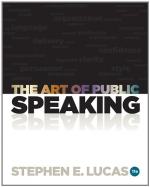Now tempo is a tremendously important element in good platform work, for when a speaker delivers a whole address at very nearly the same rate of speed he is depriving himself of one of his chief means of emphasis and power. The baseball pitcher, the bowler in cricket, the tennis server, all know the value of change of pace—change of tempo—in delivering their ball, and so must the public speaker observe its power.
Change of Tempo Lends Naturalness to the Delivery
Naturalness, or at least seeming naturalness, as was explained in the chapter on “Monotony,” is greatly to be desired, and a continual change of tempo will go a long way towards establishing it. Mr. Howard Lindsay, Stage Manager for Miss Margaret Anglin, recently said to the present writer that change of pace was one of the most effective tools of the actor. While it must be admitted that the stilted mouthings of many actors indicate cloudy mirrors, still the public speaker would do well to study the actor’s use of tempo.
There is, however, a more fundamental and effective source at which to study naturalness—a trait which, once lost, is shy of recapture: that source is the common conversation of any well-bred circle. This is the standard we strive to reach on both stage and platform—with certain differences, of course, which will appear as we go on. If speaker and actor were to reproduce with absolute fidelity every variation of utterance—every whisper, grunt, pause, silence, and explosion—of conversation as we find it typically in everyday life, much of the interest would leave the public utterance. Naturalness in public address is something more than faithful reproduction of nature—it is the reproduction of those typical parts of nature’s work which are truly representative of the whole.
The realistic story-writer understands this in writing dialogue, and we must take it into account in seeking for naturalness through change of tempo.
Suppose you speak the first of the following sentences in a slow tempo, the second quickly, observing how natural is the effect. Then speak both with the same rapidity and note the difference.
I can’t recall what
I did with my knife. Oh, now I remember I
gave it to Mary.
We see here that a change of tempo often occurs in the same sentence—for tempo applies not only to single words, groups of words, and groups of sentences, but to the major parts of a public speech as well.
QUESTIONS AND EXERCISES
1. In the following, speak the words “long, long while” very slowly; the rest of the sentence is spoken in moderately rapid tempo.
When you and I behind the
Veil are past,
Oh but the long, long while
the world shall last,
Which of our coming and departure
heeds,
As the seven seas should heed
a pebble cast.
Note: In the following selections the passages that should be given a fast tempo are in italics; those that should be given in a slow tempo are in small capitals. Practise these selections, and then try others, changing from fast to slow tempo on different parts, carefully noting the effect.




